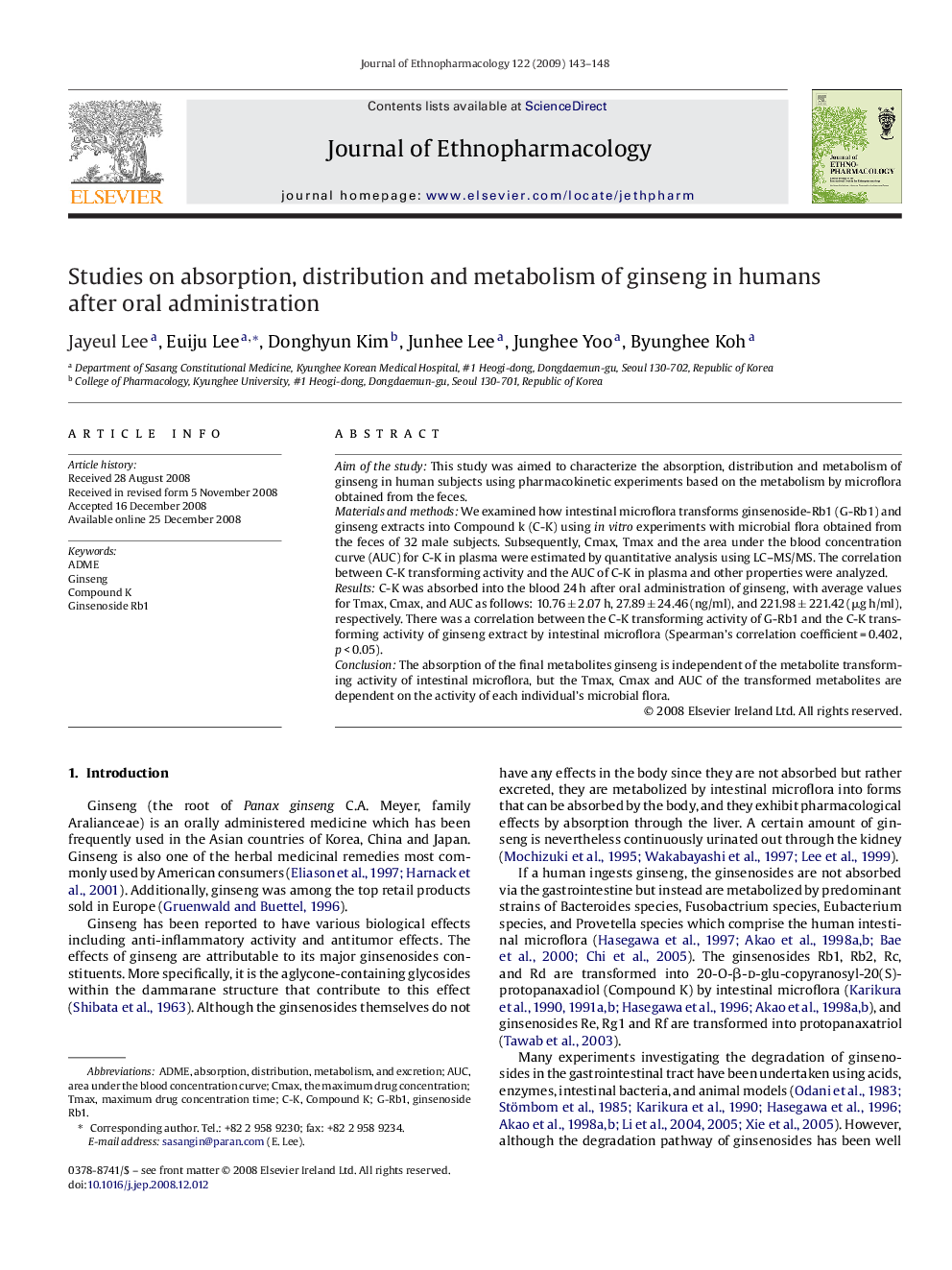| Article ID | Journal | Published Year | Pages | File Type |
|---|---|---|---|---|
| 2546145 | Journal of Ethnopharmacology | 2009 | 6 Pages |
Aim of the studyThis study was aimed to characterize the absorption, distribution and metabolism of ginseng in human subjects using pharmacokinetic experiments based on the metabolism by microflora obtained from the feces.Materials and methodsWe examined how intestinal microflora transforms ginsenoside-Rb1 (G-Rb1) and ginseng extracts into Compound k (C-K) using in vitro experiments with microbial flora obtained from the feces of 32 male subjects. Subsequently, Cmax, Tmax and the area under the blood concentration curve (AUC) for C-K in plasma were estimated by quantitative analysis using LC–MS/MS. The correlation between C-K transforming activity and the AUC of C-K in plasma and other properties were analyzed.ResultsC-K was absorbed into the blood 24 h after oral administration of ginseng, with average values for Tmax, Cmax, and AUC as follows: 10.76 ± 2.07 h, 27.89 ± 24.46 (ng/ml), and 221.98 ± 221.42 (μg h/ml), respectively. There was a correlation between the C-K transforming activity of G-Rb1 and the C-K transforming activity of ginseng extract by intestinal microflora (Spearman's correlation coefficient = 0.402, p < 0.05).ConclusionThe absorption of the final metabolites ginseng is independent of the metabolite transforming activity of intestinal microflora, but the Tmax, Cmax and AUC of the transformed metabolites are dependent on the activity of each individual's microbial flora.
